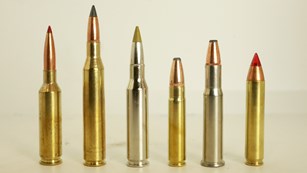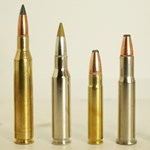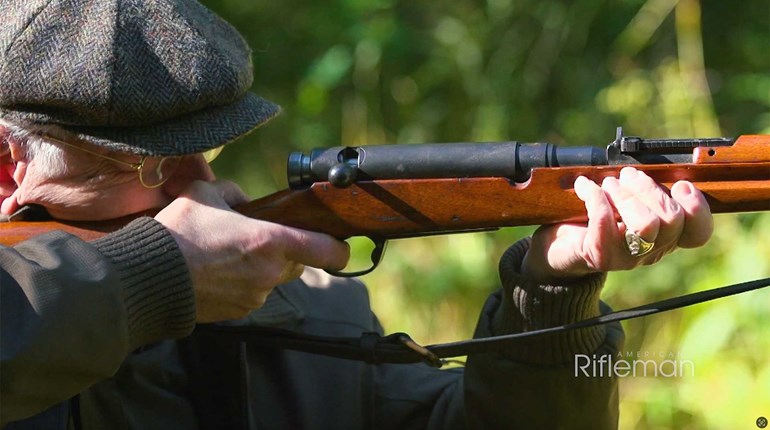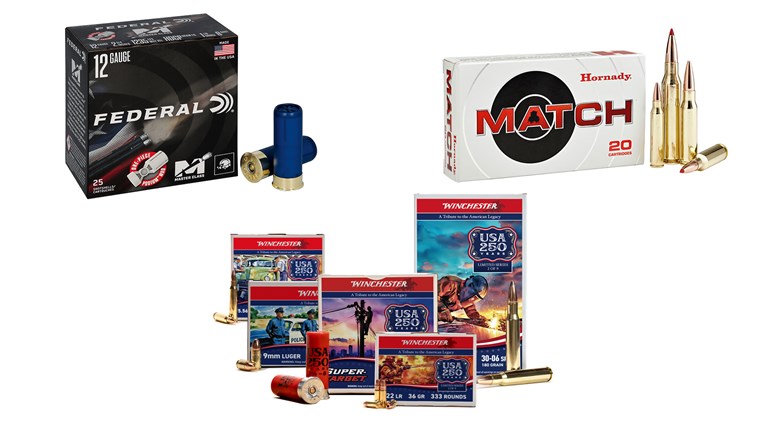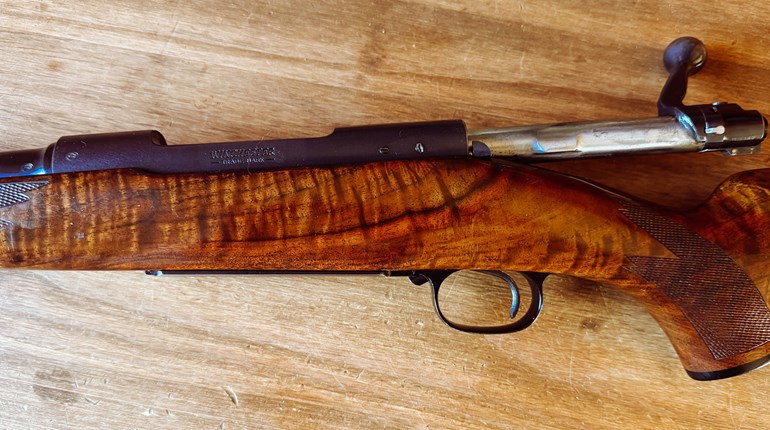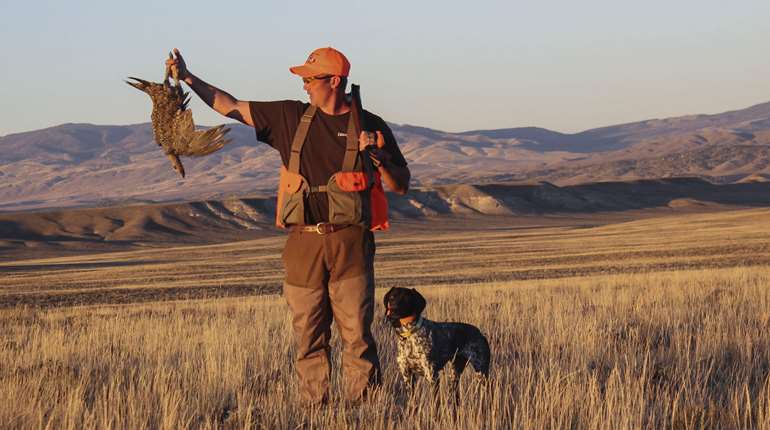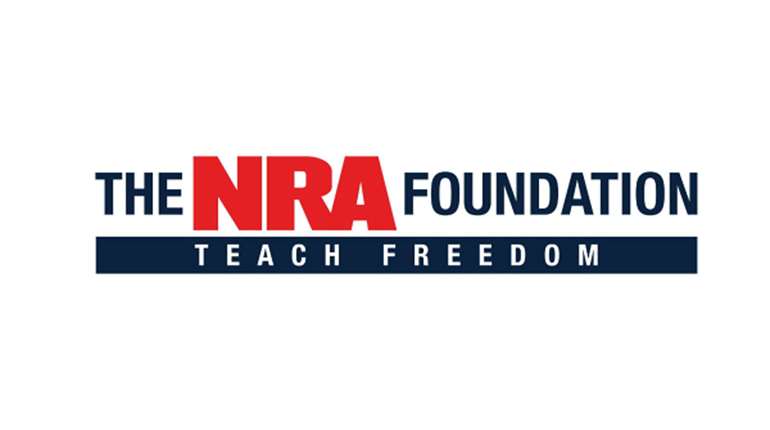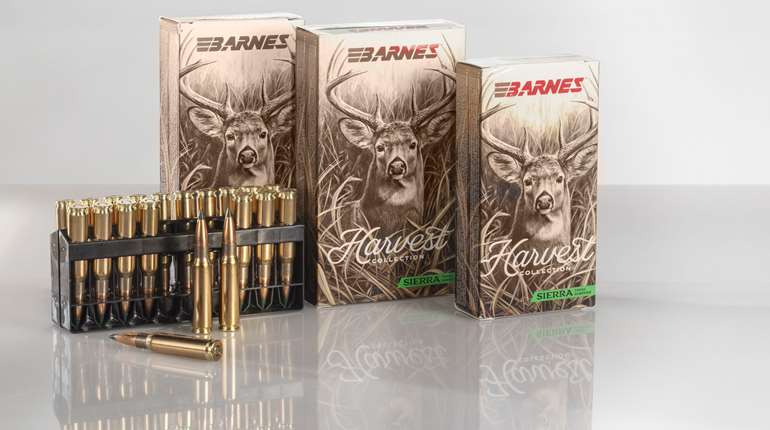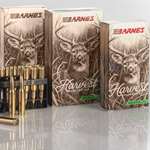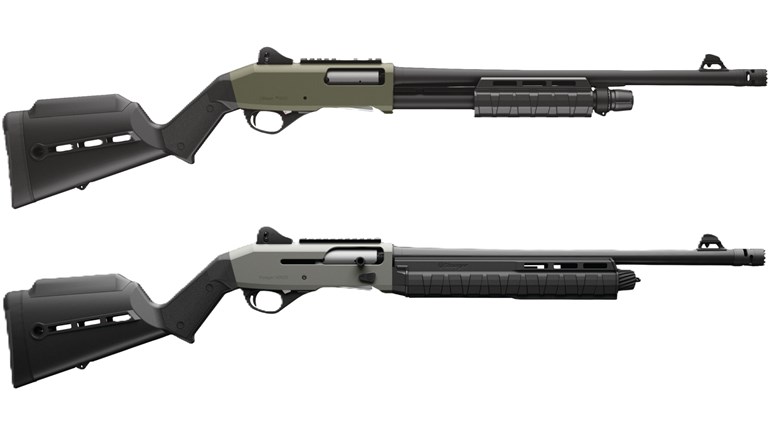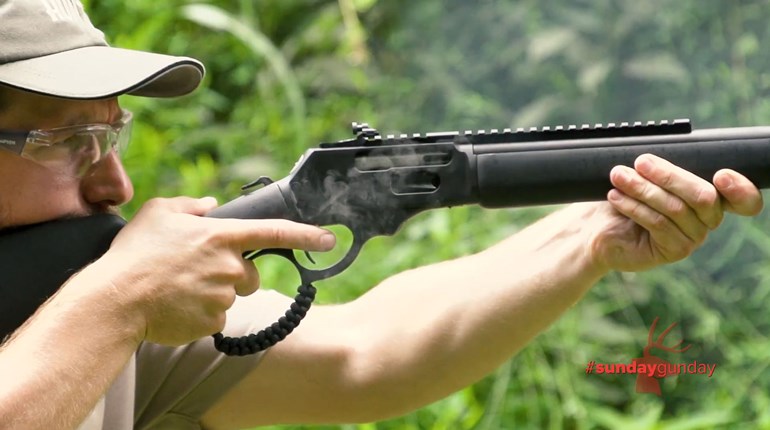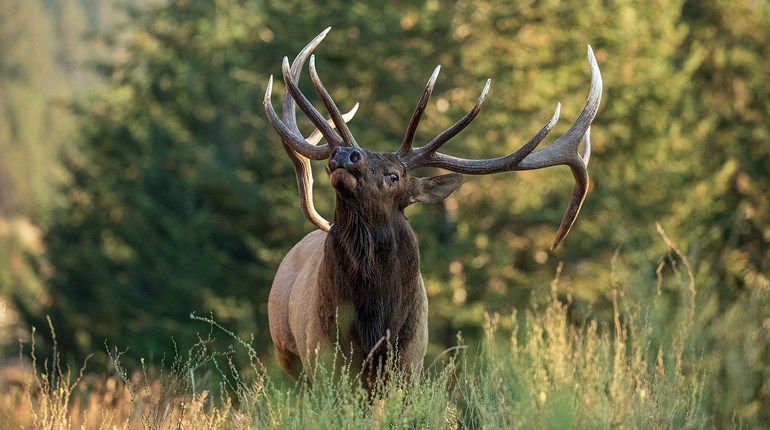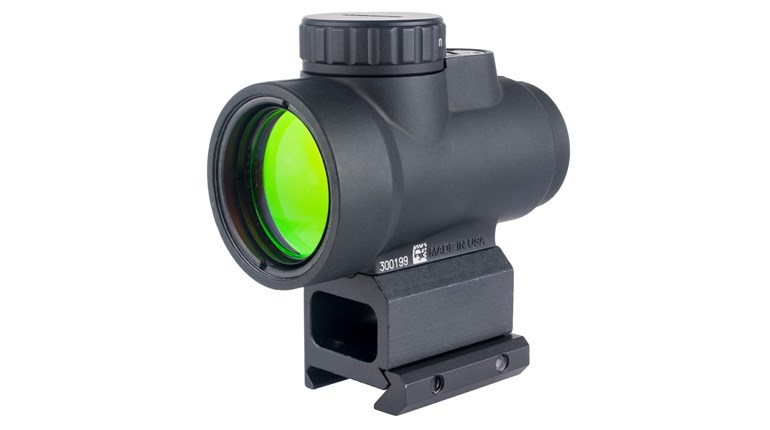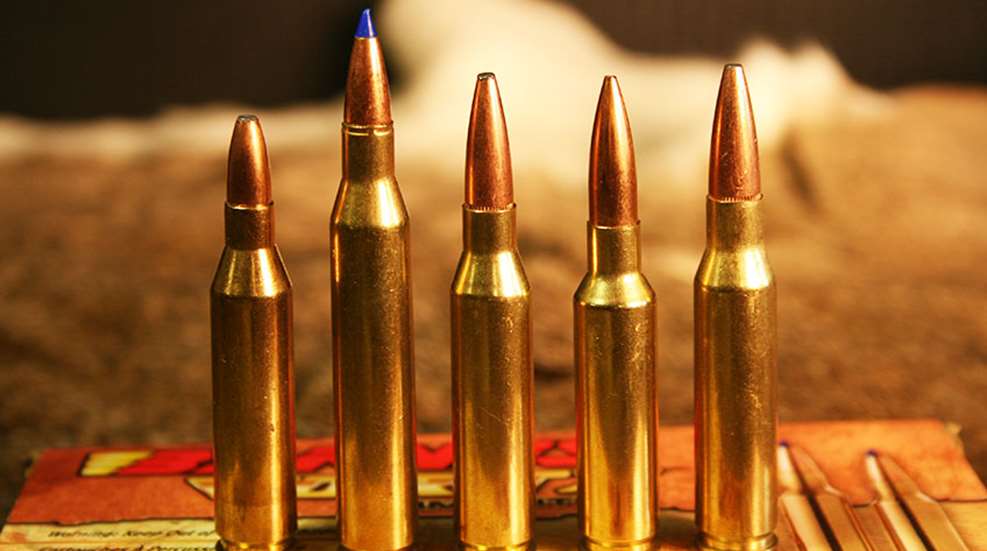
Opening day of deer season will soon be here. Is the budding big-game hunter that you’ll accompany afield this season properly prepared with the ideal rifle? Here’s some sage advice concerning caliber for the youngster.
Selecting the optimal chambering for the novice deer hunter should extend beyond, “Just give me one in .30-06 Springfield.” Why? An imprudent choice can reduce the would-be-invaluable range sessions senseless. Unnecessarily harsh recoil induces flinch, which is counterproductive to accuracy, and it diminishes the desire to practice, too. Let’s be honest, who enjoys being viciously hit in the face and/or shoulder? Assuredly, it’s very few riflemen. It’s a vicious cycle that leaves the greenhorn ill-prepared for the field. Without the confidence—and ability—to deliver the bullet accurately, a miss or even worse, wounding, is likely to result.
The reality is, most calibers that are legal for hunting whitetail and mule deer are more than sufficient for downing them—given that the bullet is of sound construction and precisely placed. Moreover, the beginner isn’t likely to take a long-distance shot, unless said shot was practiced on the range.
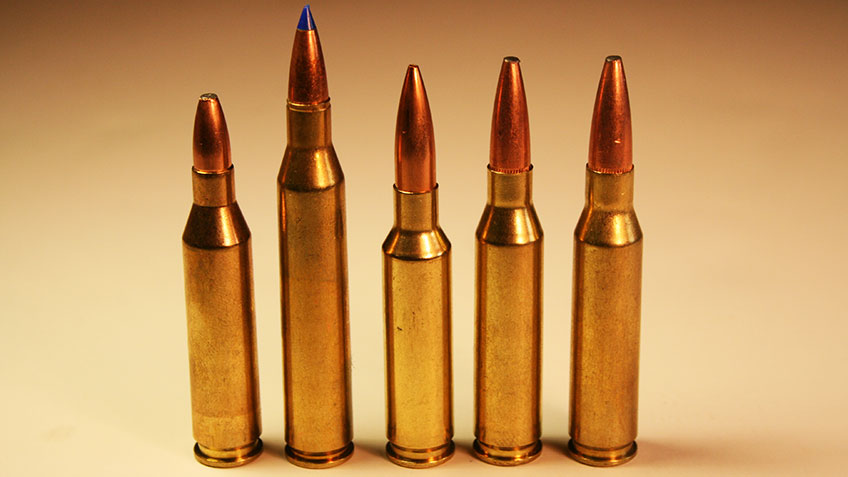
Taking this in account, the decision really comes down to choosing a cartridge that’s easy on the shoulder and wallet—the latter being important for the non-handloader who demands that the novice practice religiously. Being widely available in diverse offerings is a bonus. Lastly, you must predict the future. I’m not talking Nostradamus; rather, if you anticipate the apprentice using his or her deer rifle to pursue larger, tougher species, such as elk, then it needs to be capable of (and legal for) doing so.
To ease the decision-making process, I’ve chosen five shoulder-friendly options for the new deer hunter and have outlined the advantages and drawbacks (if any) of each below. Obviously, some possibilities, such as the .257 Roberts, were omitted. Nonetheless, all of selections will dependably serve the novice deer hunter, and many will also handle all non-dangerous game they’ll ever encounter.
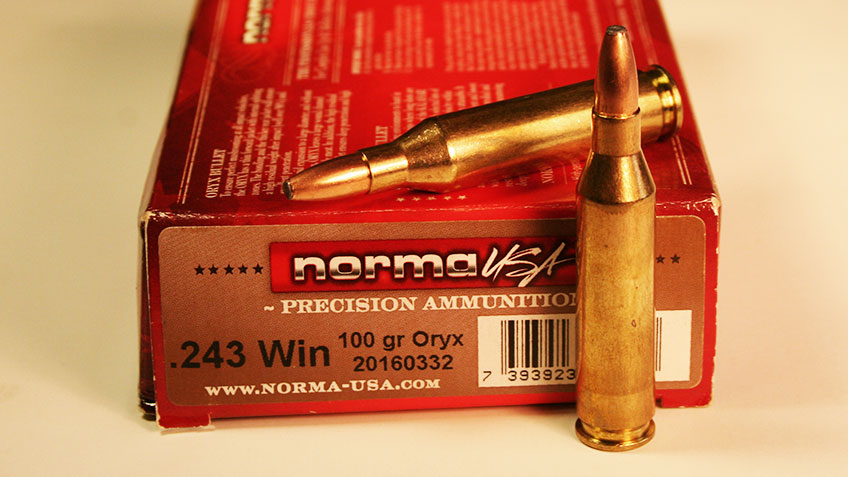
1. .243 Winchester
No list of new-hunter cartridges is complete without the ubiquitous .243 Winchester. Developed by Winchester as a dual-purpose—hunting varmints and deer-size game—cartridge, it has faithfully served in said role since 1955. Probably more first-time deer hunters today go afield with the .243 than any other cartridge. Given the bullet weights of .24 caliber and the velocities generated by the .243 Win., I prefer to use “premium” controlled-expansion bullets—especially on larger deer species. These projectiles provide a measure of insurance in case of a less-than-ideal shot or tough angle; the vitals will still be impacted.
Advantages:
• Mild recoil
• Proven performance on deer and antelope
• Flat-shooting cartridge
• Amazing assortment of factory ammunition (MidwayUSA.com alone lists 46 loads)
• Inexpensive ammunition and components
• Hunting-specific bullets available in weights ranging from 55 to 115 grains
• Useful for varmints, predators and deer-size game
• Nearly universally chambered (and in short-action rifles)
• Nearly universally available ammunition
Drawbacks:
• Maximum hunting bullet weight is 100 grains in most factory ammunition
• Not well-suited for game bigger than deer
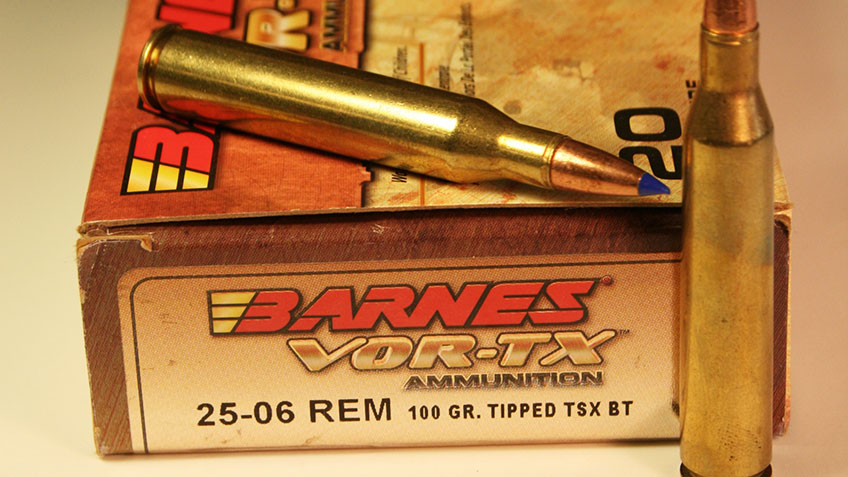
2. .25-06 Remington
Originally a wildcat dating back to 1920, Remington formally adopted the cartridge in 1969. It’s been devoutly supported a small cadre of big-game hunters since. As with the .243 Win., the .25-06 Remington has seen use as a dual-purpose cartridge, though primarily so for small predators and big game. Why? While excellent for distant rock chucks and woodchucks, the cartridge’s recoil is a tad much for the extended shooting sessions common to prairie dog towns. That’s a moot point for predator hunters. Beyond being an excellent deer round, when loaded with a heavy, controlled-expansion bullet, such as the 120-grain Nosler Partition or Speer Grand Slam, the .25-06 Rem. is a verified elk killer.
Advantages:
• Proven performance on deer and larger game
• Hunting-specific bullets available in weights ranging from 70 to 120 grains
• Flat-shooting cartridge
• Useful for large varmints, predators and larger game (including elk)
• Decent assortment of factory ammunition (MidwayUSA.com alone lists 23 loads)
• Respectable selection of rifles chambered in it (especially from Savage Arms)
Drawbacks:
• Recoil is too harsh for long shooting sessions
• Requires a heavier, long-action rifle
• Ammunition is generally costlier than other “standard” chamberings
• .25 caliber bullets have relatively low ballistic coefficients
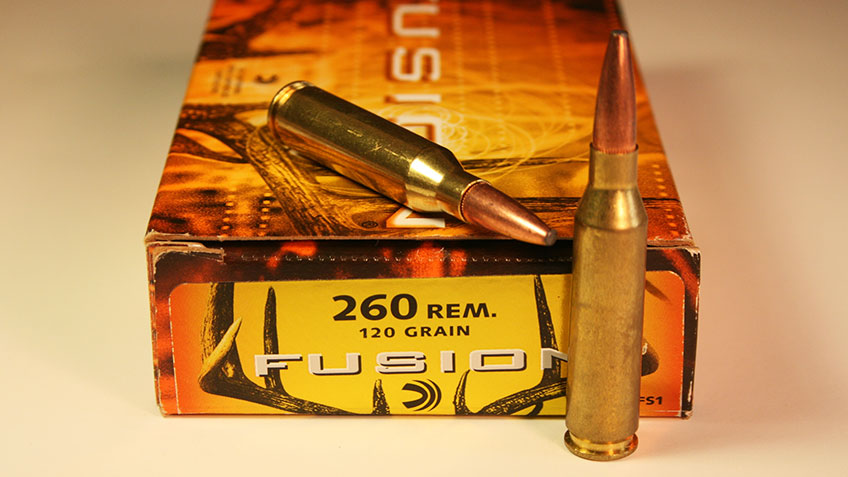
3. .260 Remington
“Tainted” is best way to describe the 1997 introduction of the .260 Remington, which rightfully should have been coined “6.5-08 A-Square” due to A-Square providing SAAMI all of the materials necessary for adoption many months before Remington. As is evident by its name, Remington ended up reaping the rewards. Nevertheless, the short-action cartridge experienced little success among hunters initially, even though it compared favorably to the long-time European favorite, the 6.5x55mm. Success at various long-range competitions such as NRA High Power caught the attention of hunters who wanted a low-recoil, flat-shooting, big-game cartridge—particularly for deer-sized game. The round would be a viable option for the low-volume pursuits of marmots and predator hunting.
Advantages:
• Proven performance on deer and larger game
• Hunting-specific bullets available in weights ranging from 95 to 160 grains
• Mild recoil
• Flat-shooting cartridge
• Useful for large varmints, predators and large game (including elk)
• Decent assortment of factory ammunition (MidwayUSA.com alone lists 20 loads, though many are match-specific options)
• Respectable selection of rifles chambered in it (especially from Remington and Savage Arms)
• Most 6.5mm bullets have high ballistic coefficients and sectional densities
Drawbacks:
• Requires a 1:8″ twist barrel to stabilize the heaviest bullets (many early .260s had 1:9″ or slower barrels)
• Ammunition is generally more expensive than other “standard” chamberings
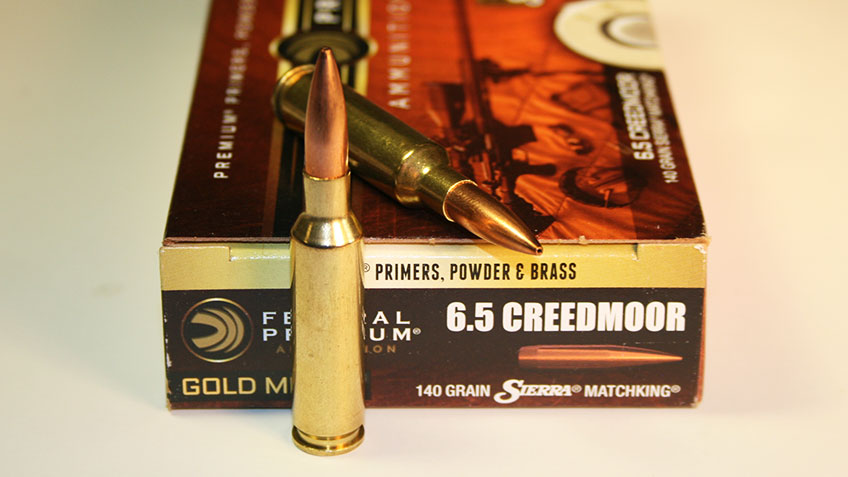
4. 6.5 Creedmoor
Two decades after the introduction of the .260 Rem., Hornady unveiled the 6.5 Creedmoor, which, frankly, is what the Remington cartridge should have been. Though virtually identical in regard to ballistics, it has a vastly superior case design. That’s because the cartridge was designed from the get-go as an across the board competition and big-game cartridge capable of utilizing the full range of 0.264-inch diameter bullets, including those of the VLD design. How good is it? This cartridge alone has changed American’s perceptions about 6.5mm cartridges, and it was recently adopted by USSOCOM and DHS snipers, too. To this, I’d like to add that I used the cartridge to take a large Nebraska whitetail, as well as several game animals in South Africa, including black wildebeest (300 yards), Cape kudu (341 yards) and impala (401 yards), among others. All were one-shot kills. Plus, the 6.5 Creedmoor offers mild recoil to boot. Yeah, it’s good.
Advantages:
• Proven performance on deer and larger game
• Hunting-specific bullets available in weights ranging from 95 to 160 grains
• Mild recoil
• Flat-shooting cartridge
• Useful for large varmints, predators and large game (including elk)
• Amazing assortment of factory ammunition (MidwayUSA.com alone lists 49 loads, though a lot are match-specific options)
• Large selection of rifles chambered in it
• Most 6.5mm bullets have high ballistic coefficients and sectional densities
• Has at least a 1:8″ twist barrel to stabilize the heaviest 6.5mm bullets
• Ammunition and components are priced comparable to other "standard" chamberings
Drawbacks:
• None
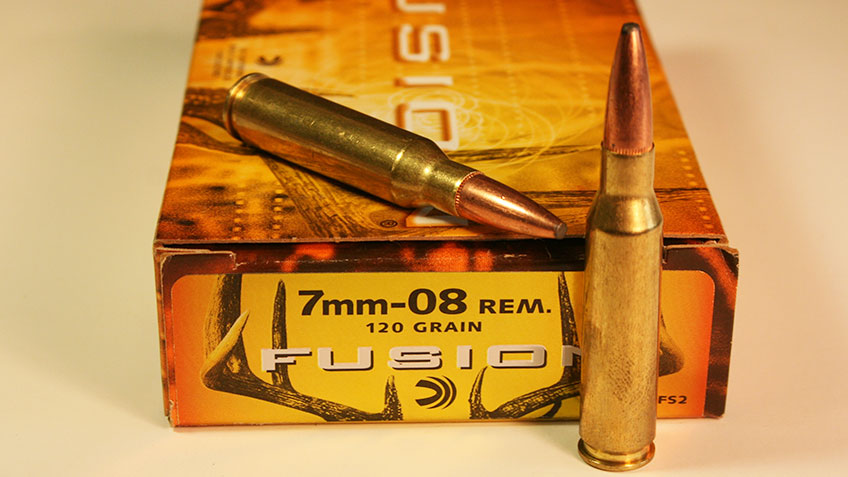
5. 7mm-08 Remington
Yet another wildcat legitimized by Remington, the 7mm-08 Rem. arrived on the scene in 1980. Having the same parent case as the .243 Win. and .260 Rem., the short-action 7mm-08 Remington also offers excellent downrange performance on deer-sized game without undue recoil. However, it’s arguably superior to all others on this list when larger species are pursued, as premium-quality hunting bullets in 0.284-inch diameter weigh upward of 180 grains, though those in the 140- to 160-grain range are the most popular. When using a lightweight, fragile projectile, such as the Hornady 120-grain V-Max, the 7mm-08 Remington chambered deer rifle nicely pulls double-duty for prowling predators and destructive marmots.
Advantages:
• Proven performance on deer and larger game
• Hunting-specific bullets available in weights ranging from 120 to 180 grains
• Mild recoil
• Flat-shooting cartridge
• Useful for large varmints, predators and large game (including elk)
• Good assortment of factory ammunition (MidwayUSA.com alone lists 27 loads)
• Respectable selection of rifles chambered in it
• Many 7mm bullets have high ballistic coefficients
• Ammunition and components are priced comparable to other “standard” chamberings
Drawbacks:
• None
Now, go ahead and make that all-important decision so that you can get your youth deer hunter out to the range to begin practicing.


